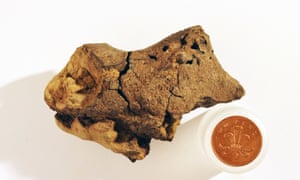Alex J. Battick HBA, LLB
4 Steps to Solving Life’s Everyday Problems… Like a Lawyer
Precedent is what our legal system is based on; it is the idea that similar issues should be
treated similarly. But it is also an acknowledgement that human behaviour can be predictable and repetitive. For this reason, subsequent problems with similar facts can be dealt with certainty.
Lawyers are trained to use precedent to solve legal problems. Our day to day problems can be tackled in a similar manner with the premise that someone, somewhere, at some time, is likely to have experienced something similar to you. This is reassuring since whatever challenge, obstacle or barrier you face, you can be fairly confident that you are not the first, you are not the only, and you certainly are not the last person who will be able to overcome it.
I believe the methodology we use in law school to navigate hypotheticals, transcends mere legal practice — it could be viewed more broadly as a template to solving many of the challenges that creep into our lives.
1. You may be experiencing a problem, but what is the issue?
Solving a worry starts by identifying what the real problem is. You may be surprised to learn how difficult this can actually be. We are taught to look for all the possible issues within a given set of facts. However, when clustered among irrelevant pieces of information, answering the overall question becomes increasingly difficult.
Similarly, life has a way of clustering irrelevant things around our real issues as well. The problems we face may at times, only be precipitates of underlying issues. Working with the facts of our day to day lives becomes a game of reading in between the lines.
Moments of self-reflection and introspection is a starting point when trying to identify the issues. Emotional intelligence is useful, as we may feel that something is not ideal. In
fact, these feelings are a significant component of the critical thinking process. Scientists
suggest that emotions can guide us to make sound decisions in times of uncertainty, and so should not be dismissed.
Think of these feelings as a trail of breadcrumbs leading to the issues that need to be
addressed.
2. Find the rules that best work to get you out of the problem.
What are the parameters you have to work in when addressing the intricacies of your
problems? Lawyers, after identifying the type of issue, must apply the relevant laws and rules to that circumstance. These eventually become guidelines, used to draw conclusions. But does life have its own set of rules we can use to navigate our personal problems?
There is nothing new under the sun.
It shouldn’t be a surprise to us that this is the case. Whether it is love or war, or anything in between, people at some point approached the topic with contemplation. Thus, your life issue is likely to have been experienced by a large number of people before you, many who derived meaning, philosophies or solutions from their experience.
But, where does one find these “rules” to life? Something akin to this may be the advice that is available in books, TV shows, research, documentaries, the news or experience from friends and family. If you still aren’t convinced, check out a random episode of Friends, and notice you are able to extract an overarching lesson applicable to the average person.
Avoid the belief that your situation is so unique that you aren’t able to find reference points to help you through the challenge. You will be hard pressed to find something out there that doesn’t give you a new perspective, at the least. And this is the key — a new perspective.
I am not suggesting that these reference points are answers to your problems. Joey or
Chandler wind up in the most unlikely of circumstances. But the ways in which they have navigated their challenge is of interest to you. Lawyers use case law and legislation as tools to finding an appropriate solution. Use the lessons learned from others to build a series of helpful guidelines for resolving the issues presented to you.
3. Apply the framework you’ve learned, to the issues you have identified.
The crux of being a lawyer is being able to take the rules you are given and apply them to the problem at hand. Conversely, using the experiences and lessons learned by others, we have a firm foundation to stand on when reacting to most of the problems life throws our way.
Of course, TV shows aren’t necessarily the most accurate depictions of reality, and many of these sources you are referencing are not going to be exact templates to your problem. But that is beside the point; these sources do tell you something about the human condition. You have a reference point that allows you to begin finding real solutions to a problem you momentarily couldn’t navigate on your own. Use the resources to differentiate the “rules” from your situation and realize what may and may not be applicable.
4. What can you do next?
People go to lawyers because they want answers; solutions to a problem that they may not have the technical knowledge to navigate on their own. While the process is significant, it is the conclusions that can be drawn that are truly important to clients. Likewise, it is this understanding of what must be done next that is so fruitful.
If you have a problem, but you can’t do something about it… then don’t worry. If you have a problem, and you can do something about it… then don’t worry.
It seems to me that there will be many instances where fear and anxiousness derived from problems, are able to manifest because we lose a sense of control. When you are able to identify what your issues are, and sift through the options available to you, your anxiety and fear may not disappear; but a newfound sense of hope may be enough to offset negative feelings. So, ask yourself:
What is in your control?
What is out of your control?
What is the most important thing you can do, right now?
This final stage is all about having a growth mindset; it’s about having confidence in yourself and your choices while taking responsibility for your actions and decisions. Like lawyers who posit their conclusions, act in a way that reflects an understanding of the circumstance holistically.
Precedent Experience is the idea that knowledge or skill can be acquired over a period of time. But experience is only translatable when one can relate to it. You don’t really know how being stung by a bee feels until you experience being stung by a bee. Yet, wisdom isn’t always acquired by personal experience; we can rely on others to guide our decisions.
Using the resources around you, you can solve the next problem life serves… you just need to start thinking like a lawyer.
Recap:
1.Identify the issues.
2.Find a reference point that you can develop a new perspective about your issue from.
3.How does the reference point compare to your problem?
4.Make a move.
https://giphy.com/embed/TvGzSb70uoMEMvia GIPHY
Read more @: http://www.alexbattick.com/



















